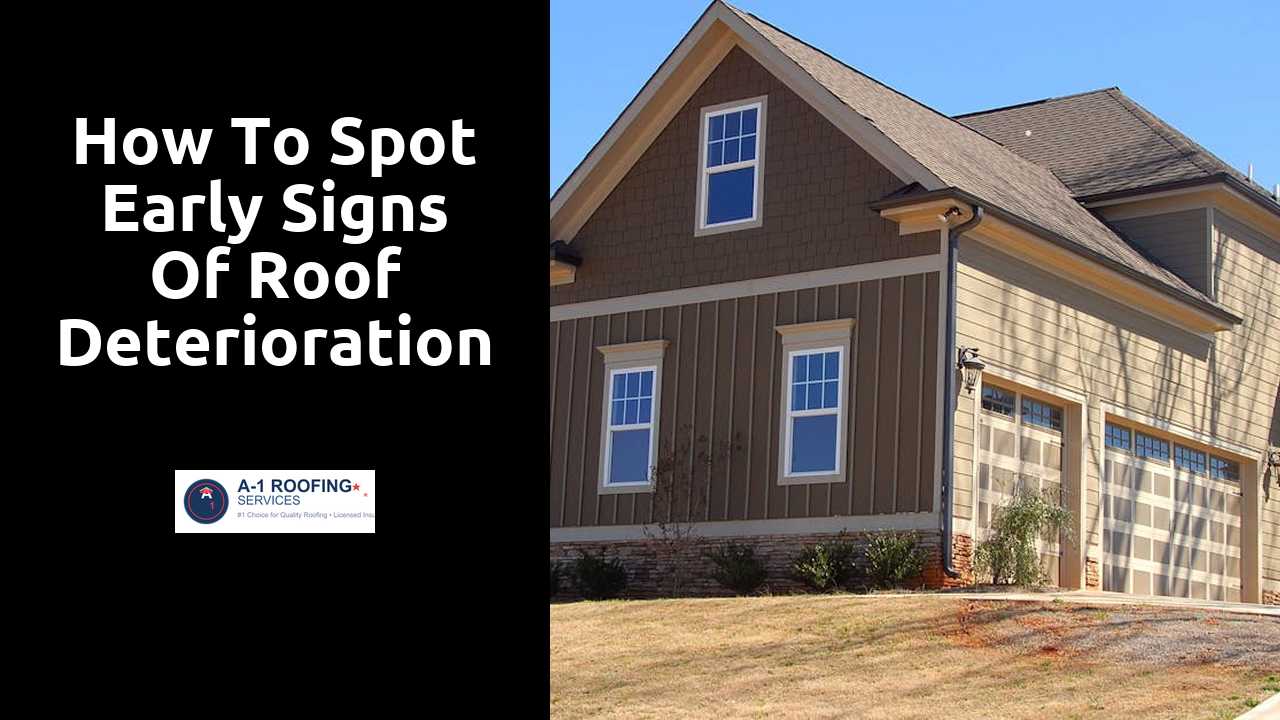
How to Spot Early Signs of Roof Deterioration
Table Of Contents
Weather Impact on Roof Integrity
Various weather conditions can have a significant impact on the integrity of a roof. Heavy rain can lead to water pooling, which may cause leaks and damage over time. Similarly, high winds can detach shingles or even tear them completely from the roofing surface. Snow accumulation poses another risk, as the added weight can strain the structure and lead to potential collapse if not managed properly.
Sun exposure also plays a crucial role in roof deterioration. Ultraviolet rays can degrade roofing materials, leading to brittleness and cracks. Temperature fluctuations create expansion and contraction cycles that stress materials, further increasing the possibility of damage. Understanding these factors can help homeowners recognize early warning signs and take preventative measures to protect their roofs.
See here for more great tips.
Effects of Extreme Temperatures and Storms
Extreme temperatures can significantly affect the integrity of roofing materials. Intense heat can cause shingles to become brittle leading to cracks and eventual leaks. Conversely, freezing temperatures may result in the expansion and contraction of materials, creating stress points. These changes weaken the overall structure and make roofs more susceptible to damage over time.
Storms pose a direct threat to roofs, with heavy rain and strong winds exacerbating existing vulnerabilities. Wind can lift shingles, allowing water to penetrate underneath and cause leaks. Hail can dent or break shingles, creating openings for moisture intrusion. Homeowners should be proactive in assessing their roofs after severe weather events to identify any damage that may have occurred.
Seeking Professional Help
Homeowners should not underestimate the importance of professional roof inspections. A roofing specialist possesses the training and knowledge to identify issues that may not be visible during a casual look. They understand common signs of wear and damage, ensuring that nothing goes unmissed. Hiring an expert can provide peace of mind while also preventing potential hazards that could arise from unnoticed deterioration.
Timing is essential when it comes to addressing roof problems. If you observe leaks, sagging, or missing shingles, it's wise to reach out to a roofing professional immediately. Early detection can save significant costs and extend the life of your roofing system. Understanding when to call for expert help can make a considerable difference in the overall condition of your home.
When to Call a Roofing Specialist
Homeowners should consider reaching out to a roofing specialist as soon as they notice signs of significant wear or damage. Issues such as sagging, missing shingles, or leaks can escalate quickly without professional assessment. An experienced roofer can not only identify existing problems but also prevent future complications resulting from prolonged neglect.
Complexities often arise when attempting to diagnose roof damage from the ground. While some problems may appear minor, underlying issues could be more severe than they seem. A professional can conduct a comprehensive examination of the roof's structure and materials, ensuring all aspects are evaluated, which might be challenging for an untrained eye.
DIY Roof Inspection Techniques
Regular inspections can help homeowners identify potential roof issues before they escalate. One effective method involves visually checking for any signs of wear and tear from the ground. Using binoculars, look for missing shingles, discoloration, or growth of moss and algae. Observing the roof from various angles can provide a fuller picture of its condition.
If climbing onto the roof, ensure safety precautions are in place. A sturdy ladder is essential, and wearing a safety harness can help prevent accidents. When on the roof, check for loosened or damaged flashing around chimneys and vents. Look for any sagging areas, which may indicate underlying structural issues. Documenting findings with photographs can aid discussions with professionals later.
Tools Needed for a Safe Inspection
To conduct a thorough roof inspection, certain tools can enhance safety and efficiency. A sturdy pair of binoculars allows for a close-up view of the roof's condition from the ground. This can help identify shingles that are missing, cracked, or curling without the need for climbing up. A ladder is essential for getting onto the roof safely. It should be stable and rated for the height you'll be working at, with a partner available to assist if needed.
Protective gear is also crucial during inspection. A hard hat can guard against any falling debris, while slip-resistant shoes provide traction on steep surfaces. A harness is advisable when working on higher pitches to ensure safety in case of a slip. Additionally, having a flashlight ready can help illuminate darker areas or under overhangs for better visibility. Collecting a notepad or a digital device enables the documentation of any findings for future reference or professional consultations.
Related Links
Creating a Seasonal Maintenance Schedule for Your RoofEssential Preventative Maintenance Practices for Roof Longevity